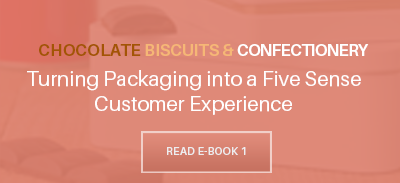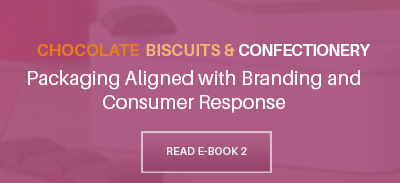Food packaging is based on psychological studies on how people judge brands. Here are details about the purposes of food packaging and how it helps gain a competitive edge. Packaging has evolved since the late twentieth century to become more creative and engaging.
Fundamentals of Food Packaging
A growing body of research has helped point food packaging in a direction that reflects values and emotions of consumers. Food packaging must capture the imagination to compete with the thousands of food choices in a supermarket. Some of the ways researchers learn about what type of food packaging designs will work for include:
- motivational research
- color testing
- psychological manipulation
Studies have revealed a connection between stimuli and human behavior. Finding out what motivates people to make purchases is only part of the puzzle that leads to sales. According to Fast Company, psychological manipulation is about the science of persuasion based on how individuals respond to stimuli, such as social influence, attitudes, information, priming, favors and scarcity.
Why Colors Influence Minds
Color testing is important because it taps into how individuals react emotionally to certain colors, shades and color schemes. But it's important to remember that the data can be mixed since each respondent has their own personal experiences with colors. Here's what researchers have found what colors mean to a general cross section of consumers:
- yellow: optimism

- orange: friendliness
- red: excitement
- purple: creativity
- blue: trust
- green: peace
- gray: balance
Interestingly, a study at the University of Winnipeg, Canada, found that 90 percent of quick purchasing decisions are based on color alone. Another study published by Sage Journals found that the relationship between brands and color depends on perceptions of appropriateness of how colors fit brands. It turns out blue is by far the most popular color for both men and women, according to research by Joe Hallock, published in Entrepreneur.
Graphic Design and Other Aesthetics
The food container must be more than just practical. It should be artistic to the degree that it is memorable and evokes emotion. While color is a top concern, designs must also draw attention to the various messages printed on the package. Think of aesthetic beauty as the front end of the purchasing process, since it's usually what makes a first impression.
Consumers will eventually judge the overall quality after the purchase, based mainly on taste and whether or not it brings satisfaction.
Aesthetics of the packaging matter because the product needs to stand out in store displays. Out of hundreds or even thousands of products, consumers need to recognize the item instantly so that they aren't distracted by many other marketing displays and messages campaigning for attention. It's important to remember that any given consumer may want to buy several products, but does not necessarily have the budget to go on a massive shopping spree.
In order to establish a competitive advantage, a food product needs to convey taste in an obvious away. It should communicate emotions and experiences and paint imagery that relates to the target audience.
Product Details
How labels resonate with consumers is a deeply important part of food packaging. The most effective labels encourage prospects to buy the product, but also influence people in ways the product is used, transported, recycled or disposed. These relationships must be communicated clearly on labels. Consumers often ignore fine print but can be motivated by visible text. Some people read ingredients to make sure they are not buying something in which they are allergic.
Security and Product Protection
It's imperative that a product gets from the manufacturer to the supply chain to the customer safely. At every stage of the way, whether it's shipping or stocking, the product must remain undamaged or it will likely register as a lost sale or return. Packaging helps protect the product throughout the process, especially if it's made of glass or other breakable materials. Some of the main concerns should be that the product is protected from the following reasons of damage or deterioration:
- mechanical

- thermal
- biological
- chemical
- by radiation (e.g., UV light)
- malicious human tampering
- electric
- compression
Barrier Protection
Just as important, although not talked about much outside the industry, is barrier protection. The product must be protected from oxygen, water vapor, dust and other elements that can cause degradation. Certain perishable products, such as food items, require controlled atmospheres in order to stay clean, fresh, sterile and safe. Shelf life depends on these factors.
Conclusion
Since a typical supermarket carries hundreds of items spanning several product categories, it's essential for a food product to stand out more than blend in. The packaging works best when it provides a convenient practical solution that comprises the product and surrounding space within the package. Make sure that the exterior provides useful information and attractive imagery in order to compete for attention.
References and Further Reading
- More articles on Chocolates , Biscuits and Confectionery packaging, by Alex Cosper and Dawn M. Turner
- Read more on Luxury Packaging by Alex Cosper
- From Disgust to Desire: How Products Elicit Our Emotions (2004), by Pieter M. A. Desmet, in Design and Emotions, edited by Dena McDonagh et al., page 8.
- Food packaging: The medium is the message (2010), by Corinna Hawkes
- Multisensory design: Reaching out to touch the consumer (2011) by Charles Spence and Alberto Gallace
- Assessing the influence of the color of the plate on 2 the perception of a complex food in a restaurant setting (2013), by Betina Piqueras-Fiszman, Agnes Giboreau and Charles Spence
- Does the weight of the dish influence our perception of food? (2011), by Betina Piqueras-Fiszman, Vanessa Harrar, Jorge Alcaide and Charles Spence
- The weight of the container influences expected satiety, perceived density and subsequent expected fullness (2011), by
Betina Piqueras-Fiszman and Charles Spence








